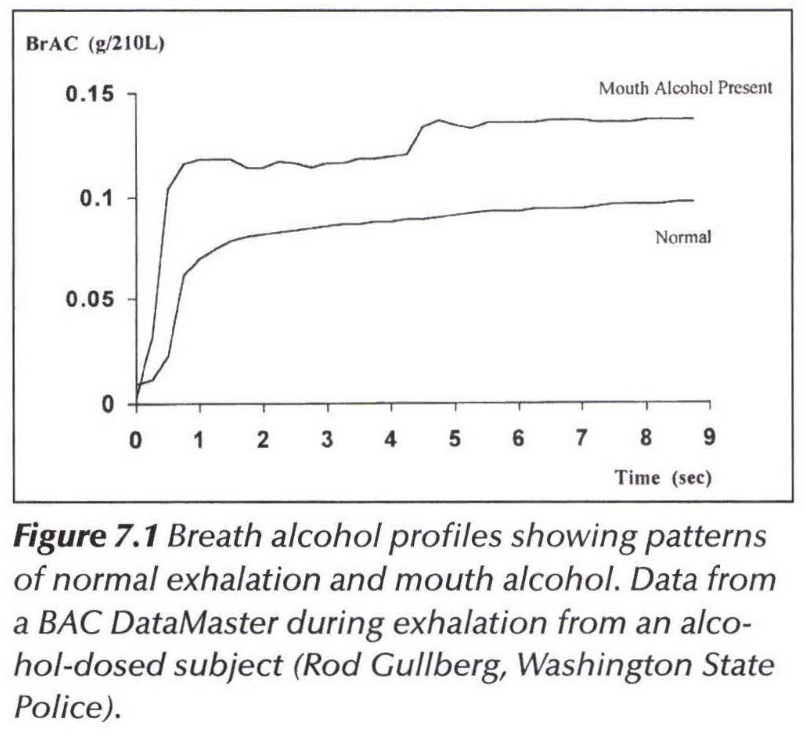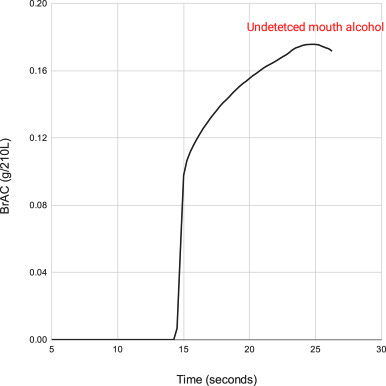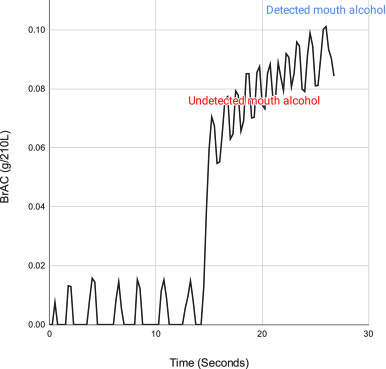The Data They Don't Want to Record: Inside the Hidden Crisis of Breath Alcohol Testing
Why are some labs choosing to destroy breath alcohol test evidence?
There's a secret in the world of forensic breath alcohol testing that should outrage anyone who believes in due process and scientific integrity. Some forensic laboratories are deliberately asking manufacturers to disable data-recording features on their breath alcohol instruments; features that could reveal when tests produce false results.
Let me be clear: these instruments are fully capable of recording detailed expirogram data that can expose testing failures. But some labs specifically request this capability be turned off. They're essentially choosing to hide evidence.
The Research That Revealed the Problem
In my recently published study in Forensic Science International: Synergy, I documented multiple cases where breath alcohol analyzers failed to detect mouth alcohol contamination, a situation that can falsely elevate test results and lead to wrongful convictions.
But here's what makes this even more troubling: not all labs save this data.
What Are Expirograms and Why Do They Matter?
An expirogram is essentially a graph showing how breath alcohol concentration changes as a person exhales into the testing device. In a normal test, you see a characteristic curve: the reading rises rapidly at first, then levels off as the person continues to blow.

When mouth alcohol contamination occurs, whether from residual alcohol in the mouth, acid reflux, or stomach contents coming up through burping, the expirogram shows telltale signs: unusual waviness, negative slopes, or erratic spikes. These patterns are like fingerprints of contamination.
But here's the problem: the slope detection algorithms that are supposed to catch these anomalies fail far more often than the public realizes. In some studies, accuracy rates are as low as 50%.
The Case Studies That Changed Everything
In my research, I examined three particularly revealing cases:
Case 1: A driver with documented GERD and acid reflux whose expirogram showed clear anomalies consistent with mouth alcohol contamination. The DataMaster DMT analyzer didn't flag it. Without the recorded expirogram data, this contamination would have been invisible.
Case 2: An individual who burped multiple times during the pre-test observation period and reported feeling stomach contents refluxing into their throat. The expirogram showed a negative-going slope—a classic sign of mouth alcohol. Again, the instrument missed it.
Case 3: A subject whose test showed multiple oscillations and erratic patterns that could indicate either mouth alcohol contamination or instrument malfunction. The device only flagged the contamination on the final oscillation, missing the earlier problems.
In each case, the expirogram data provided crucial evidence that the breath test results were questionable. But in many jurisdictions, this data simply isn't recorded.
The Deliberate Destruction of Evidence
Here's what should shock you: these instruments can record this data. The technology exists. The capability is built in. But some testing programs specifically configure their instruments not to record expirograms.
Why would they do this? The cynical answer is that recorded data creates the possibility of successful challenges to test results. If there's no expirogram to examine, defendants can't use it to prove contamination occurred. It's evidence destruction by design.
The Secrecy Problem
Making matters worse, the algorithms used for mouth alcohol detection are typically kept as proprietary trade secrets. Manufacturers claim these are competitive advantages that must be protected. But when these secret algorithms are used as evidence in criminal proceedings, this secrecy violates basic principles of due process.
How can someone defend against evidence they're not allowed to examine? How can scientists verify the reliability of systems they can't study? The Sixth Amendment guarantees the right to confront your accuser, and some legal scholars argue this must extend to algorithmic accusers as well.
The Path Forward
The solution to this problem isn't complex, but it requires transparency and institutional change:
1. Mandatory Data Recording
All breath alcohol testing instruments should be required to record complete expirogram data. If the technology exists to preserve evidence, there should be no option to disable it.
2. Algorithm Transparency
The algorithms used for mouth alcohol detection should be subject to independent scientific review.
3. Independent Access for Research
Currently, major breath alcohol analyzer manufacturers don't sell their devices to independent scientists for research purposes. This needs to change. Science advances through independent verification and peer review.
4. Recognition of Limitations
Testing protocols should acknowledge the limitations of slope detection systems and require additional safeguards when expirogram anomalies are present.
A Call for Scientific Integrity
The hallmark of good science is openness and transparency. We cannot accept systems that operate in secret and deliberately destroy evidence.
Every forensic scientist should be asking: if these instruments can record the data that reveals testing problems, why would we ever choose not to record it?




